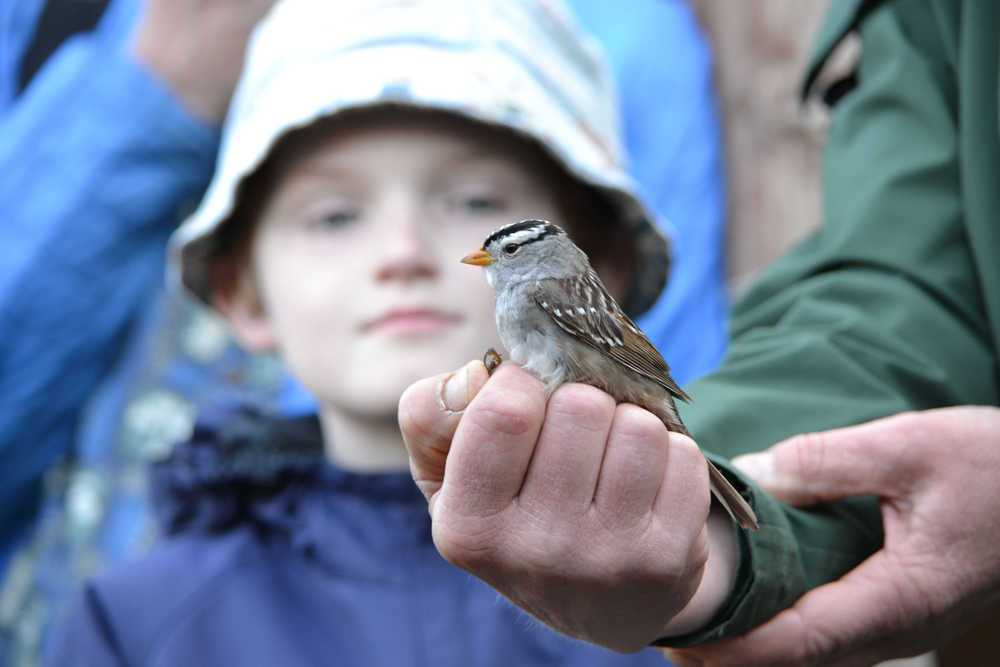Five or six kids ran, laughing and smiling, along the perimeter fencing of the Juneau Community Garden before they came to a stop next to a small group of adults standing by a post where a large net abutted the fence perpendicularly.
The net, about 8 feet tall and 30 feet long, looked like an oversized tennis net extending into the woods next to the garden. Only it wasn’t for a game — it was for catching birds.
“Not yet,” Gwen Baluss, a wildlife technician with the National Forest Service, told the crowd of excited onlookers as she walked toward the fence having just inspected the giant net. “It’s kinda like fishing. You’ve got to wait a few minutes.”
Baluss, a few other Forest Service employees and about a dozen other people gathered in the garden Saturday to catch birds and band them in celebration of International Migratory Bird Day.
All told, Baluss and a small group of volunteers caught seven birds in their specialized mist nets, as they’re actually called, and attached bands with a unique number series to their legs. These bands allow the Forest Service to study and track the migratory patterns of birds. The United States and Canada both track birds this way using a centralized database to determine where birds are going and how long they live, among other things.
The group captured and released birds of five varieties, mostly different sparrows and warblers.
Though seven birds is more than most people catch in a lifetime, let alone in a single morning, Baluss said that Saturday “was actually a pretty slow day” as far as bird catching is concerned. Surprisingly, the good weather was to blame.
“It was too sunny today,” Baluss explained to the same group of kids that had run to greet her earlier. “They were all active at five this morning. They’re already in their nap time by late morning.”
Samuel Wharton, 10, and his cousin Mariah Butner, 12, were among that crowd, but they didn’t seem bothered by the apparent lack of activity.
“When we caught the Lincoln’s sparrow, it buried its head in her hands, and then it rocketed off,” Wharton recalled, describing his favorite moment of the morning — when Baluss released one of the birds.
Butner, too, enjoyed watching the birds fly free after being banded.
“I think the best part was letting the birds go again,” she said.
Wharton may some day fill Baluss’ shoes. As young as he is, Wharton is able to identify more varieties of birds than most adults.
“Sometimes I read through my Birds of Alaska field guide just for fun,” he said after rattling off several birds he’d like to catch. “My favorite bird is either the Magpie or the Willow Ptarmigan.”
The Tongass National Forest has participated in the annual celebration of migratory birds for more than 17 years. This year’s event was sponsored by the Forest Service, the Juneau Audubon Society and the Juneau Community Garden.
Contact reporter Sam DeGrave at 523-2279 or at sam.degrave@juneauempire.com.

